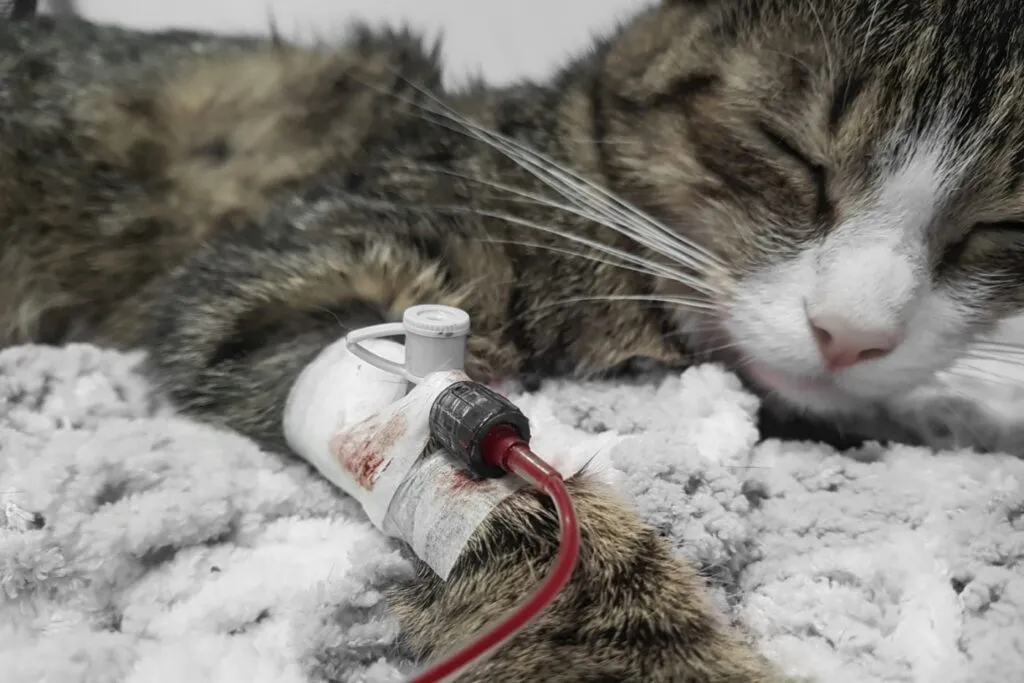There are many triggers that can lead to anaemia in cats. In general, vets distinguish between regenerative and non-regenerative anaemia.
Regenerative Anaemia
Regenerative anaemia is present when the bone marrow is still active and producing erythrocytes, but these are being destroyed or lost faster than usual. This can be due to various causes.
Blood Loss
If your cat is losing a lot of blood, there is a deficiency. This can be due to:
- gastrointestinal bleeding, triggered by parasites or an intestinal tumour
- Coagulation disorders
- Trauma, injuries and vessel ruptures
- Poisoning with coumarin derivatives found in rat poison
Haemolysis
In haemolysis, the red blood cells are destroyed due to the cell membrane breakdown. This includes the autoimmune haemolytic anaemia (AIHA), which is more common in dogs. The body produces antibodies against its own erythrocytes, causing them to break down prematurely.
This can occur idiopathically or due to other underlying conditions such as:
- Inflammatory diseases like polyarthritis or nephritis
- Infectious diseases like FeLV/FIV or FIP
- Medication like methimazole and toxins like onions or antifreeze
- Tumours such as lymphoma or leukaemia
Non-Regenerative Anaemia
Non-regenerative means that the bone marrow is no longer producing new red blood cells. This can be due to various causes.
Bone Marrow Diseases
Certain triggers can damage the bone marrow, which is responsible for the formation of new erythrocytes. These include:
- Certain medications or toxins
- Ionising radiation
- Infections like FeLV or the parvovirus
- Myelodysplastic syndrome
Extramedullary Diseases
When the cause lies outside the bone marrow, it is an extramedullary disease. Typical triggers for this kind of condition are chronic diseases like:
- Infections
- Kidney and liver diseases
- Tumours

